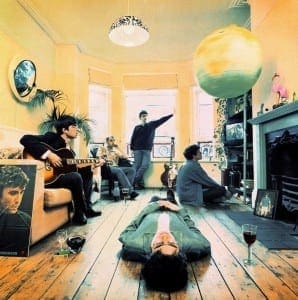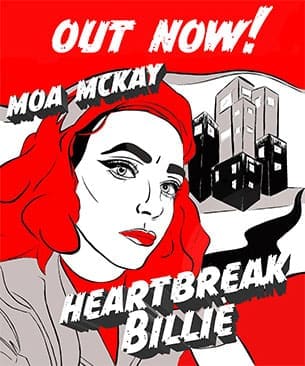Michael Spencer Jones is a photographic legend, creating the visual images that defined Britpop, with his covers of all the biggest Oasis albums as well as Suede and the Verve, as well as being constantly by the side of Oasis as they cut their swathe through the nineties music scene.
Now he’s put all his best Oasis shots together in a collection called Supersonic. Previously shown in the Royal Albert Hall in London, the collection will be show in the popular indie bar Posh Teckel in Berlin-Kreuzberg.
Michael Spencer Jones will be present at this in-bar on the 7th to open the exhibition together with influential UK musician and journalist John Robb.
Everyone’s quite excited about it, as you can imagine, with the Vernissage being announced in Rolling Stone, Musikexpress and Intro. Michael Spencer Jones was nice enough to give indieberlin an exclusive interview about his time with Oasis and what you can expect to see at Posh Teckel.
Michael Spencer Jones indieberlin exclusive interview:
ib: Spontaneous photos or set-up photos – what works better for you?
Michael Spencer Jones: I like both, the ‘found ‘ image is good but I also like to create images and then capture the moment within that set-up that I have created.
there are situations when it is not socially acceptable to bring a camera out
ib: Is there such a thing as a sacred moment when you do not take the photo even though you know it would be successful?

Oasis Cover Definitely Maybe by Michael Spencer Jones
Michael Spencer Jones: Good question; I think if something is worth photographing then it is worth photographing no matter what and there is no situation that should prevent that, HOWEVER, there are situations when it is not socially acceptable to bring a camera out and start taking pictures. I do have some regrets though of not taking a photo when I know it would have made a great image. One example is when Oasis were recording ‘Morning Glory’ in a studio in Wales in 1995. There had been some arguing and fighting during the evening and to cut a very long story short the room Liam Gallagher was staying in (which was next to mine) got completely destroyed. The bed was broken in half, the TV was thrown out of the window and was half in and half out of the room; everything that was in the room that could be broken had been broken, it was a scene of utter carnage. I can remember thinking I’ve got to get a picture of this room but in a way the picture could have been quite incriminating and if someone had seen me take a photo, I may well have been fired so I didn’t bother but now I do regret not taking a picture because it would have been a wonderful document. I still have a vivid picture of the room in my head but of course I can’t show anyone.
What’s the dark side of music photography?
Michael Spencer Jones: When you are photographing a band playing live and the stage lighting is not bright enough.
ib: When have you last enjoyed a concert without taking pictures?
Michael Spencer Jones: I saw Paul McCartney at the Royal Albert Hall a couple of years age, that was pretty enjoyable.
There is no set way to creating an iconic cover
ib: How is the concept of an album cover that will probably become the icon of a music era born? Were you usually inspired by the lyrics and the tale of the album or more from an artistic urge to describe the rebellious and ‘fuck you’ attitude of the bands?
Michael Spencer Jones: There is no set way to creating an iconic cover. One thing that is important is that the process has to be organic and has to develop naturally. The way I work is that I need a starting point or a germ of an idea which can be developed. This can be inspired by a suggestion from a band member or by a certain lyric or by some larger concept or by an image or painting, or something I have read in the newspaper that day. For example; you may start off with an idea of a photograph of someone stood on a platform at a train station waiting for a train ( is he or she a commuter? who are they going to see? why are they catching a train? etc. etc. a pretty boring narrative) but then you can think wouldn’t it be better if the station was disused and derelict and the person is waiting for a train that will never arrive; firstly you have a more interesting scene visually i.e. the distressed look of a disused station but also you are introducing a more interesting narrative, who is this person? why are they there? are they mentally ill? is this a statement about the passage of time? etc etc. but that said and to answer the second part of your question, you need to be true to the band and represent them or their music in a genuine way.
Photography is not easy, you have to work at it to get results
ib: did you ever have a photo session with someone where the human side didn’t work out? And if so how did you go about it?
Michael Spencer Jones: Not quite sure what you mean, but sometimes shoots can be awkward and they don’t work out but you have to persevere with them and apply yourself and work your way through the problem maybe try a different approach. Photography is not easy, you have to work at it to get results.
ib: What are your next projects?
Michael Spencer Jones: An exhibition in Japan and to finish work on a book that I am currently doing about Definitely Maybe.
Thank you very much and see you at Posh Teckel!
Interview by Mia Morris
SUPERSONIC – DIE OASIS AUSSTELLUNG
from saturday March 7th 2015
Posh Teckel – Pflügerstr 4, 12047 Berlin
Vernissage with Michael Spencer Jones & John Robb


